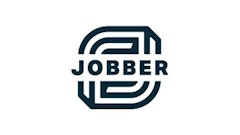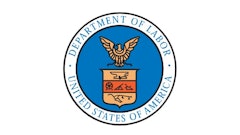
Do you feel stuck in this economy or have doubts about the future viability of your business? A lot of contractors don’t—because they’ve had a strategic plan in place that has helped them navigate their companies to a position of lesser vulnerability in today’s environment.
A strategic plan defines a company’s direction. A good strategic plan also sets specific goals and objectives, assigns responsibility and establishes timelines so that the new direction is eventually reached. Smart business owners allocate resources so that the new direction can be reached.
Make no mistake—we are operating in a completely different environment than we did a few years ago. Ignoring margins, inferior salesmanship and lackluster customer service simply will not work in this business environment.
If you’re not diligently working to improve your operating systems, strengthen your brand and diversify your service and/or customer mix, it’s probably time to get started. And even if you have been doing all of these things, a strategic planning meeting is still a highly effective way to regain the support of your staff and identify emerging opportunities for your company.
So assemble your team, find a desirable location, roll up your sleeves and be prepared to completely dissect your business—your very future could depend on it.
Make it an Event
The strategic planning process should occur in a private area, generally off site from your business. It should be attended by key employees and/or selected staff members. If necessary, use a facilitator (maybe someone from your admin staff) to write down comments and keep the meeting moving.
The meeting should be attended by key staff, such as:
- Account managers
- Sales managers
- Office managers
- Supervisors
- Foremen
The important point is that you are trying to build a team approach through this process, so include any key staff members that you can spare for the day.
Make the strategic planning process fun, and try to keep it to a half day since all-day marathons tend to be counter-productive. When choosing a location, make it a special morning or afternoon that is comfortable for your staff and on a day that is not conflictive with their work schedule.
You may find that local hotels near your office will offer you reasonable rates for meeting rooms. One of your clients might even have a nice meeting room at their facility. You may want to order in breakfast or lunch to add a special feel for the day. Most hotels offer nice buffets or have it catered.
Bring along visuals and large poster boards to write down and collect data. Make sure everyone’s idea or opinion counts. Remember, if your staff contributes to the process, they are most likely to buy into the plan. A dynamic business is one where everyone works together with a strong sense of purpose while harvesting new ideas.
Define Expectations and Mission Statement
After everyone has slammed a couple cups of coffee and the energy is starting to flow, begin your strategic planning session by defining the purpose of the planning session. You may suggest that you’ve gathered key personnel for the purpose of establishing company goals, focusing your efforts and building a team approach.
Also reach out to your staff, asking each individual what their expectations are for the meeting. This information should be written down and acknowledged. This serves as an ice breaker and will make individuals feel comfortable that their ideas are important and that you value them.
This will lead into developing your company’s mission statement, which simply states your company’s reason for being. A mission statement should communicate a sense of purpose to employees while also illustrating your company’s image to customers.
Here’s an example of a mission statement for a mid-sized diversified landscape company:
We are a service-oriented landscape installation, maintenance, lawn care and irrigation services business providing absolute satisfaction to our clients. Through an energetic, dedicated and creative approach, we are inspired to provide our services with integrity while promoting a gainfully employed staff.
Here’s an example of a mission statement for a smaller lawn maintenance company:
As a company that is committed to a professional approach to our business, we provide hands-on care toward quality landscapes through individualized attention. Our knowledge and hands-on approach provides superior one-on-one attention with a personalized touch.
Dissect Your Business
Once your company’s mission statement is developed or re-evaluated, it’s important to take a serious look at the following areas: What is going well within your business? For example, maybe you have a good safety record, a good base of business or a well-established business. Be specific.
What isn’t going as well as you would like within your business? Examples may be communication, uniforms or teamwork. Again, be specific.
Who are your clients? You need to categorize your clients and understand who you work for. This could be architects, general contractors, property managers, private business owners and homeowners.
What is your client’s situation? Conduct a close examination of what you see your clients dealing with. For example, are they faced with tightening budgets, water shortages or more competition?
What external factors face your business? External factors facing your business might be the economy, weather, political, environment, etc.
Staff evaluation. You need to understand the pros and cons of your staff. Are they well-trained, committed, skilled, unskilled, complacent, energized, etc?
What opportunities are available to your business? This can be a fun area to explore. Try to determine if your company has a new niche it can explore such as golf course work, HOAs, estate homes, irrigation management, etc. At the same time, determine if you can further emphasize specific areas you currently service. As an example, do you service hotel properties within your market? If not, could you break into that business? If you service HOAs, could you place more focus on that segment?
Set Goals and Objectives
Once you and your key staff have fully dissected your business, establish your goals for the year by incorporating and committing to the items discussed above. Keep your goals well-targeted to three or five specific items.
For example, one goal might be to improve office efficiency, a second might be to improve staff development, and a third might be to explore growth opportunities. Arrive at your goals through consensus knowing that every opinion is important.
Once the goals are defined, it is important to apply specific objectives to each goal. In other words, what specific activities do you plan to do to accomplish the goals set forth within your strategic plan?
Once you complete this exercise, your strategic plan should be finished—complete with goals, objectives and specific activities to give your company a fresh start. Type it up and give it to your employees, or at least the key personnel who were part of the strategic planning meeting. And don’t be shy about posting goals throughout the facility. Additionally, make your mission statement visible to all staff, and make sure it’s posted in key meeting areas.
If you’re like most landscape contractors, you’re playing by a whole new set of rules these days. But with the new challenges you face come new opportunities. Embrace them, both the good and the bad, and bring your team together to help dissect your business, identify opportunities and navigate your company to a less vulnerable position.
Jon Ewing has over 30 years experience in the Green Industry. He was the founder of Landtrends Inc., a multi-state landscape construction and maintenance firm based in San Diego, and was also the co-founder of Miramar Wholesale Nurseries. Visit jonewingconsultingservices.com.





























